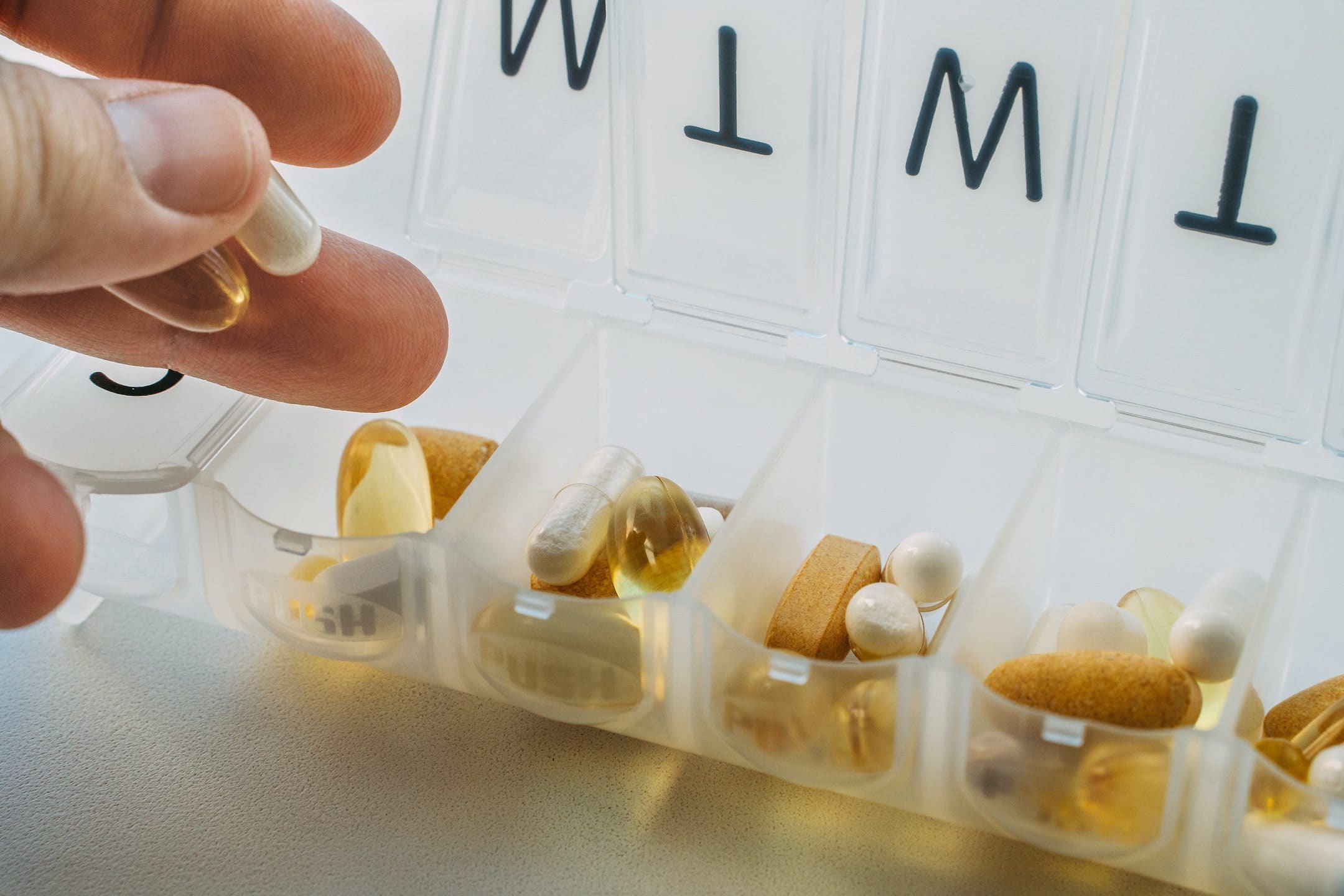You may have heard of or even considered sperm freezing as a way to help preserve your fertility for the future. If so, you might have wondered: Why pay costly sperm storage fees when you have a freezer, too? Unfortunately, it’s not quite that simple.
We’ll explain why you may want to freeze your sperm — from planning for kids at an older age to preserving your fertility before a medical procedure — and how the process works, as well as sperm freezing costs. While you can’t use an everyday freezer for at-home sperm freezing, we’ll talk about sperm freezing kits that can help you easily start the process from home.
What is sperm freezing?
Sperm freezing, also known as sperm cryopreservation, involves freezing sperm at very low temperatures that pause all biological activity. That sperm that can then be used in the future to conceive a child. Sperm cryopreservation has been used as a tool for family building for more than four decades.
There are many reasons you may want to freeze your sperm and preserve your fertility. You may hope to have children later in life, when sperm quality declines with age. Perhaps your job exposes you to toxins that could harm your sperm. Sperm freezing reserves your option to become a biological parent, regardless of age, illness, injury, medical treatment, or life path.
Learn more about why you should consider sperm freezing.
Sperm can be stored for many years until you’re ready to use it. Research indicates that while sperm that’s frozen for more than 5 years has slightly reduced quality, clinical pregnancy and birth rates are not significantly lower for sperm frozen for up to 15 years. Around 74% of sperm survive cryopreservation for at least 15 years.
Sperm freezing process
Freezing sperm is a more involved procedure than simply ejaculating into a container and putting it into the freezer. Let’s take a closer look at the steps to sperm freezing.
Sperm freezing step 1: Semen analysis
The sperm freezing process begins with a semen analysis to make sure you have enough healthy sperm to freeze. The test uses a high-powered microscope to evaluate parameters including sperm concentration (how many sperm), motility (movement of sperm), and morphology (the size and structure of sperm).
If the analysis finds that your sperm doesn’t meet minimum requirements, it can help put you and your medical team on the path to discovering any conditions or lifestyle factors that may be harming your fertility. With treatment or lifestyle changes, you may be able to improve your fertility and produce a sample to freeze.
Sperm freezing step 2: Processing and freezing the sample
Your sperm goes through some processing before freezing. Sperm is first “washed,” a process that removes the semen plasma and any contaminants to prepare the sperm to be frozen. The sperm is also treated with small amounts of cryoprotectant, a chemical that prevents damage during freezing.
After that, the sperm is separated into vials. It’s then slowly frozen in liquid nitrogen to -196º C, the temperature at which all biological activity pauses (a temperature far colder than household freezers can reach). After this point, the sperm must be stored or transported in liquid nitrogen tanks to preserve its viability.
Sperm freezing step 3: Post-thaw analysis
A small portion of your sperm will undergo a post-thaw analysis. During this test run, your sperm sample is thawed to assess how many of your sperm survive and remain motile after being frozen. This test is important since research shows that sperm motility decreases slightly after sperm are frozen.
The post-thaw analysis gives you an indicator of the post-freeze viability and motility of your sperm — the real metrics that you’ll be dealing with once you’re ready to use your cryopreserved sperm in intrauterine insemination (IUI) or in vitro fertilization (IVF).
In fertility treatments, the health of your sperm affects the success of the treatment. In most cases, samples from fertile people will still contain the minimum 10 million sperm recommended for IUI. If the sample started with a low sperm count or poor motility, though, it’s possible that an insufficient number will still be alive and healthy after thawing.
Legacy is the only at-home sperm freezing kit that includes a post-thaw analysis.
Can you freeze sperm at home?
With the complex steps, testing, and equipment needed for sperm freezing, your household freezer unfortunately isn’t up to the task. Home freezers don’t reach the required temperature of -196º C for sperm storage, instead typically working at around -18°C (0–2° F). At this temperature, your semen may be frozen, but the sperm will die instead of being cryopreserved.
Sperm freezing so you can use it in the future takes professional help. Traditionally, you would visit a fertility clinic or sperm bank. As an alternative, Legacy’s at-home sperm freezing kit now offers one of the most convenient options available, removing the need to walk into a clinic.
With this option, you’ll order our at-home sperm freezing kit and produce the sample from the comfort of your own home. Then, you’ll ship it overnight to our labs, where Legacy will analyze, process, cryopreserve, and store your sperm.
Legacy’s packages offer far more than sperm freezing and sperm storage alone. You’ll have access to a semen analysis, personalized recommendations, and consultation with a fertility specialist, in addition to secure sperm storage.
Legacy is committed to helping you preserve your fertility, meaning that your sperm must reliably be kept safe. To this end, Legacy stores sperm samples across multiple sites and locations to minimize the risk, however small, of a power outage, equipment malfunction, or other issue that could harm your sperm.
All of this can cost significantly less than average sperm storage rates in fertility clinics or sperm banks. In this way, Legacy provides an affordable, easy to use, and reliable option for storing your sperm and safeguarding your fertility.
Why do people freeze their sperm?
Sperm freezing provides an option for preserving your fertility. It may be a good choice for you if you fall into one of the following categories.
Sperm freezing if you want to have children later in life
Male fertility declines with age, especially after you reach age 35–40. Research indicates that sperm motility, the level of movement of the sperm and its ability to reach the egg, drops by up to 0.6% each year. Sperm morphology (normal size and shape), semen volume, and sperm DNA fragmentation also worsen over time. If you’re waiting until you’re older to start or build your family, sperm freezing in advance may be a good option.
Sperm freezing before certain medical treatments
Some medical treatments, such as radiation and other cancer treatments, may cause infertility. If you have a condition that needs medical intervention but you still want to have children, you’ll want to freeze your sperm before starting treatment. You may also use sperm freezing to keep the option to have children open after having a vasectomy, since the procedure may be irreversible.
Fertility preservation before gender-affirming hormone treatment
Gender-affirming hormone treatment can be a wonderful step for trans folks. It can also affect fertility, temporarily or possibly long-term. Consider your future family goals. Sperm freezing gives you the option, if you want it, of having a child that shares your DNA down the line.
Sperm freezing for those with a high-risk job, such as members of the military
Some occupations come with a greater chance of harming your sperm. For instance, military service is linked to greater rates of infertility, likely resulting from the risk of injury and exposure to chemicals. Before being deployed, you may consider sperm freezing to preserve your fertility.
Similarly, if you have a job that exposes you to radiation or environmental toxins like pesticides, it’s a good idea to freeze your sperm early on to ensure you have a healthy sample to use to conceive.
Sperm freezing for those with low sperm count or quality
If you have low sperm count, you may not have enough sperm in each ejaculation to facilitate natural conception. Sperm freezing in advance can help make sure enough healthy sperm are available when you’re ready to try a fertility treatment. Doctors can even combine samples for use in IUI, or can use ICSI, an IVF treatment in which a single sperm is injected directly into an egg.
Sperm freezing costs
Sperm freezing costs vary from state to state. It’s important to preserve your fertility, but sperm freezing can cost hundreds of dollars and add up to even more over time.
In 2017, the average cost without insurance to analyze a semen sample obtained through masturbation, screen it for infectious diseases, process it, and freeze it for one year was $745. Additional years of storage cost more; while sperm freezing prices differ depending on the clinic and their location, the average cost to store frozen sperm is $343 per year.
The process can also become more expensive because insurance does not typically cover sperm freezing unless it is necessary before cancer treatment or other medical treatments.
Legacy offers affordable sperm storage and sperm freezing options with flexible monthly, yearly, and 5-year plans. Or, never worry about paying for sperm storage again with lifetime cryostorage for just $3,995.
Legacy’s at-home sperm freezing kits make the process even easier: just order the kit, collect your sample from home, and mail it overnight to the lab for freezing. With affordable and flexible storage options and a hassle-free way to get started, Legacy helps you preserve your fertility for the future.



